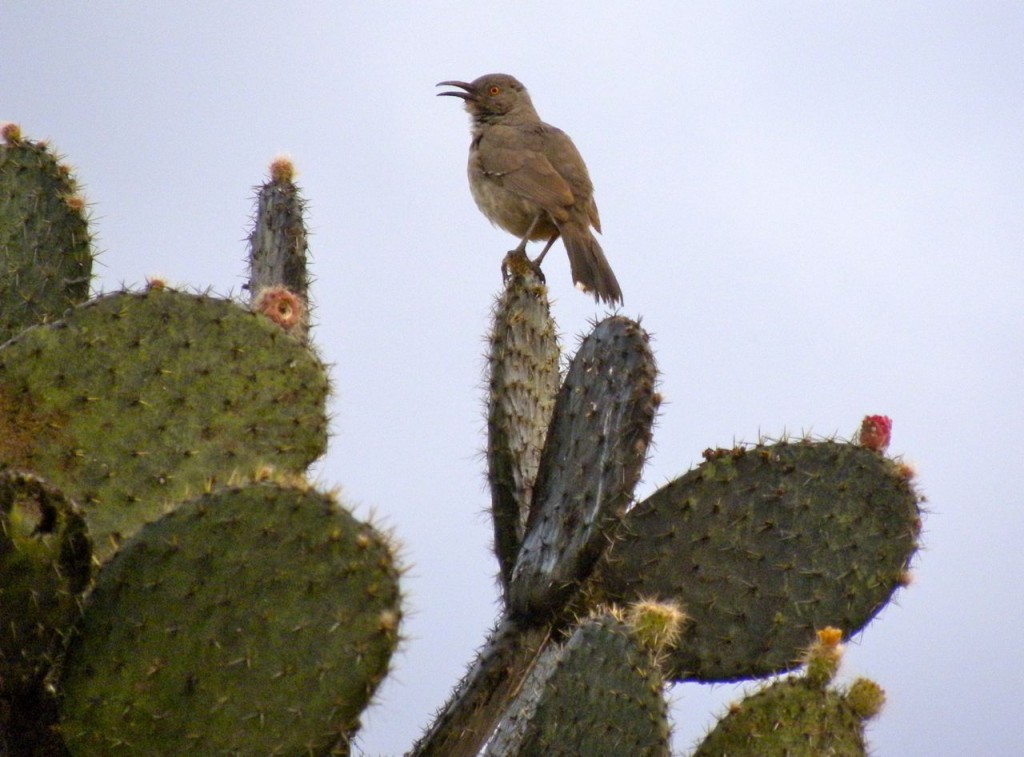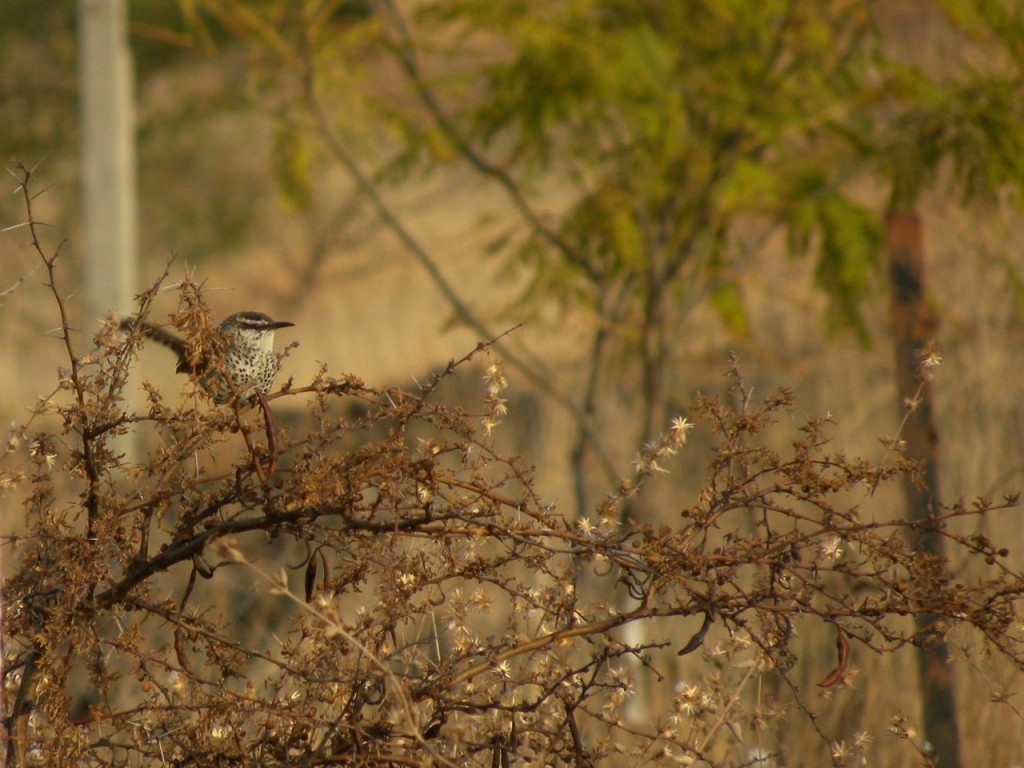January 22 2013. This is the dry season in the State of Oxaca, and maybe all of Mexico for all I know. The fields and byways are a dusty ochre and there are few trees in full leaf anywhere; a good thing for those of us on the look-out for birds.

But we had some rain last night and it was still overcast when we set out on a pre-breakfast walk through the farm and scrub lands behind our hotel. Perhaps it was that refresher, a glimpse of spring to come, that set several birds singing. Curve-billed Thrashers have a rich and complex song every bit as strident as the Brown Thrasher’s though not as regular in its phrasing. An unseen but clearly heard Eastern Meadowlark had me puzzled for quite a while with a high and liquid song similar to, but not quite the same as, the “spring-of-the-year” calls that is its hallmark in Ontario; it was only when I finally spotted it that I made the connection.
The scrubby cactus and mesquite-lined tracks held many White-throated Towhees, Lark Sparrows and the rather rare Boucard’s Wrens. The Towhees were working the grassy margins looking for seed and the Lark Sparrows always flew a hundred yards or so away at our approach. Boucard’s Wrens are only found over a very limited range right here in central Mexico, indeed they are a much sought-after species for those who maintain lists. Paradoxically, for me they were the common wren of my walks these past couple of days. I think they may even have been nesting because they were often found in pairs and sometimes more, and I spotted one, carrying a beak-full of food, fly to a pile of cactus, mesquite and construction rubble. They seemed to pop up to inspect us as we walked by and they announced our progress with sharp electric buzzes, they were the Bird of the Day despite many other interesting sightings.

Central America may be the centre of the wren universe, my field guide lists 46 species: there’s 9 quite large wrens, including Boucard’s, in the genus Campylorynchus; 16 in the genus Thyrothorus which includes the Carolina Wren and the perhaps eponymously named, Happy Wren; and 7 in the genus Trogolodytes, which is where we find our familiar House and Winter Wrens.